Dakar Biennale 2014: Highlights From Dak’Art
Our favorite works exhibited at Senegal’s 11th annual contemporary art festival

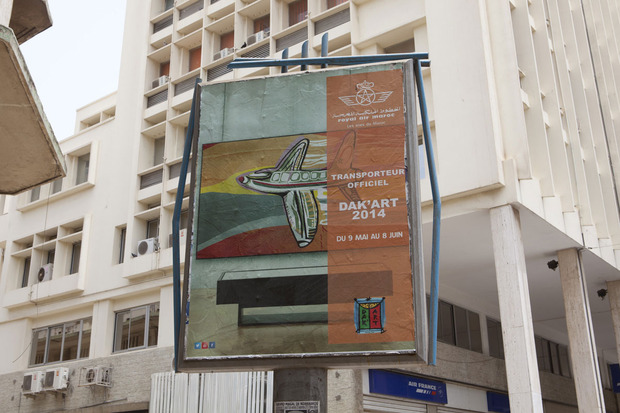
Though less famous than its siblings in Venice and Berlin, the
Dakar Biennale (on until 8 June) is a world-class art show worth the attention of international art experts and enthusiasts. This year’s Dak’Art is the 11th edition of the Biennale and one of the largest gathering of contemporary African artists anywhere in the world. The artworks on show were as striking as they were diverse, and we have highlighted just some of the most impressive.
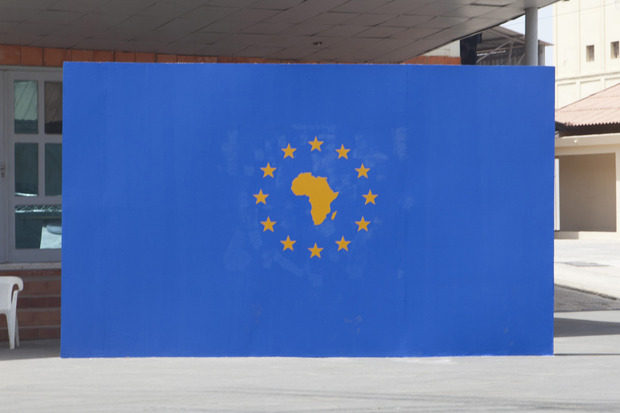
Dak’Art 2014 encompasses a handful of sites across the Senegalese capital, but the largest is the Village de la Biennale. Across the street from a cluster of car dealerships in an off-beat part of town might not seem like the most obvious venue for a global art show, but that is just the first of the Village’s surprises. Inside the venue, visitors are met with work from dozens of African artists from all corners of the continent as well as artists who have roots in Africa but live in places such as Brussels, London and New York.
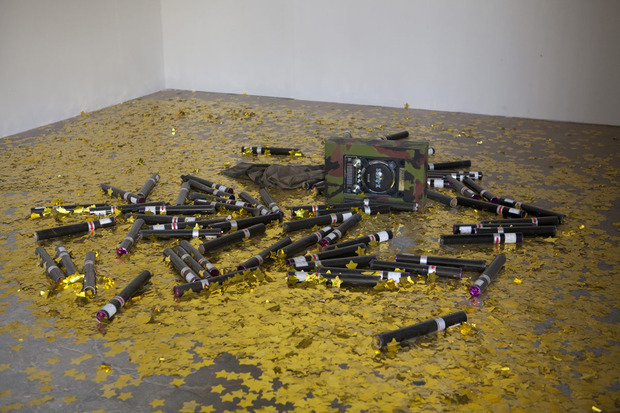
To kick off the Biennale last month, Algerian artist
Slimane Rais created “Celebration,” a temporary installation only on show at this year’s Dak’Art. During the festival’s opening reception, the 70 small black plastic cannons fired simultaneously, releasing more than 50,000 gold foil stars into the air (flying all around the guests) before settling on the gallery floor around a camouflage speaker with the empty cannon tubes.
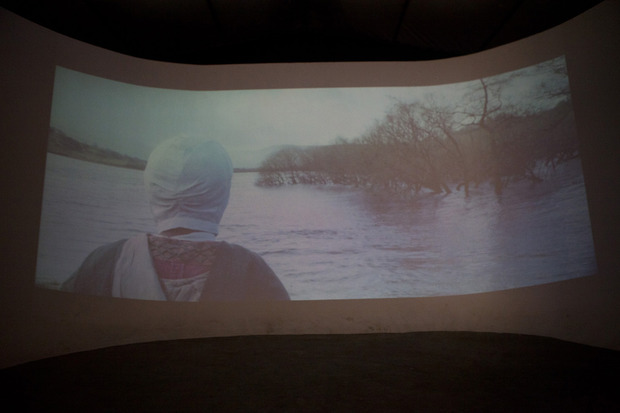
Video installations play a big part at Dak’Art 2014, with two expatriate artists showing lengthy films that straddle the line between narration and abstraction.
John Akomfrah lives and works in London, and was born in Ghana in 1957—the same year Ghana became the first African nation to declare independence from colonial rule. His piece “Peripeteia” is an 18-minute exploration of the stories behind two anonymous Africans sketched by Albrecht Dürer in the 16th century. Expansive landscapes are traversed by the two silent subjects, giving viewers an eerie, but rounded look at these otherwise flat personalities from the pages of an explorer’s sketchbook.
Brooklyn-based Wangechi Mutu’s “The End Of Eating Everything” could not be any less like “Peripeteia.” Over eight minutes, viewers see a creature called the “sick planet” devour countless creatures as it pollutes the skyscape behind it. If the sick planet looks familiar, it’s because Mutu recruited musician Santigold to be her model.
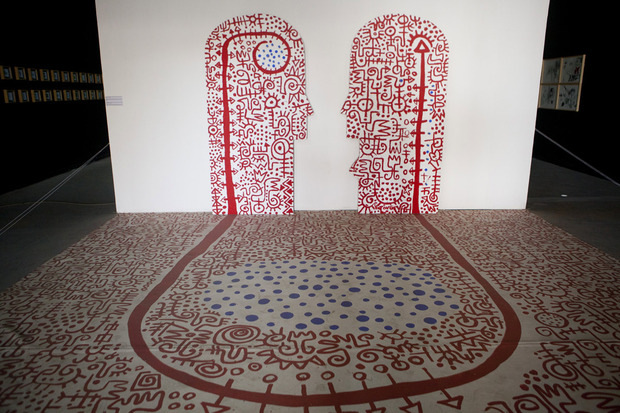
Victor Ekpuk creates large installations that play with aesthetic conventions drawn from Nigeria’s indigenous cultures, but distills out bold images that can be interpreted in a variety of ways. His “State of Beings (Totem)” presents two boldly patterned profiles that seem to rise out of an abstract ground. They combine familiar figures with unfamiliar symbols, forcing the viewer to reconcile the two.
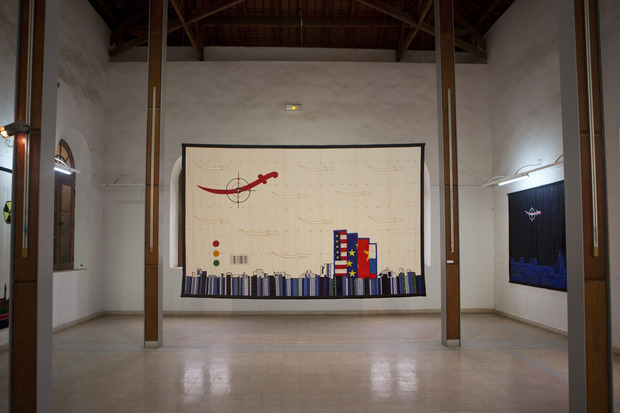
The Institut Français du Sénégal Galerie Le Manège plays host to “Le Pouvoir Du Textile,” a solo show from Malian-based textile artist
Abdoulaye Konaté. By taking traditional textiles, embroidery techniques, and motifs, then combining them in new ways, Konaté comments on the state of politics and education in post-colonial Africa. The compositions are beautiful, but that’s only part of the message.
Dak’Art 2014 is on through 8 June 2014, with participating galleries and sites across Dakar, Senegal.
Photos by Stephen Pulvirent












